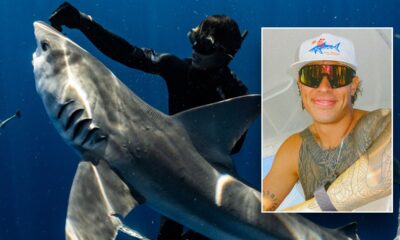KOTZEBUE — It’s raining again, the wind rising and waves sloshing over the grass. I’m yanking at corkline, struggling to stack my salmon nets into old army totes, to protect them from mice and weather for another winter. Commercial fishing in Kotzebue Sound is closed, over before it really started. A complete bust, exponentially worse than any in the past 51 years I’ve participated in this fishery.
Catches were dismal in July and many of us assumed — or tried to believe — that the run was late. Rumors swirled around town: about beluga whales, killer whales, warm water, cold water, and villagers up the Noatak and Kobuk rivers catching runs we’d allegedly missed. I didn’t believe it and kept hoping the dearth of fish was tied to changes some of us have noticed over the decades: how the peak of the run has been arriving later and later in August. Our last best season, two years ago, was slow in July, and in August more salmon flooded in than we’d seen before.
Daily, I texted Karen Gillis, Copper River Seafoods manager, or my deckhand, Catherine Greene, for fish news. None of it was good: catches were minuscule, and effort lagged. A few times a week I tested the waters with a subsistence net–until my dad walked over to Fish & Game and bought a crew license. He wanted to commercial fish. He’s 89, and fished in Kotzebue in 1960 when there was a floating cannery and salmon were 35 cents apiece, and later built a plywood boat and fished with our family from 1974 on.
He and I headed out the next morning to set off the bar, up near the mouth of the Noatak. It was good to be out there again with him, though strange now, on familiar waters, with an eerie absence of fish. My dad finally saw a hit. We motored over and grabbed the corks, but the seals were faster, swarming in to rip the flapping salmon out of my webbing. We beat them to the next fish, and a few more — just enough to give away, and to keep a bitten one for dinner.
Meanwhile, as the days passed, my daughter’s wedding was looming. I’d happily agreed to provide 17 fresh salmon she requested for the reception. No problem, I’d assured her — except now what normally would be simple was looking tenuous at best.
[The old gray kayak — the value of things made by hand.]
Copper started talking of shutting down, and rumors swirled that Fish and Game might close the season. Finally, on a Friday in early August, I made my only delivery of the summer: nine salmon. (Last year on the same day I sold 432; the previous year 1,576.)
The first of a string of storms moved in, and the rivers, still running high from previous flooding, flushed out muddy water and strong current, trees and debris. There was no opener for nearly a week, but thankfully Copper stayed, waiting like the rest of us. Fish and Game agreed to two more trial periods on the 7th and 8th. Around town fishermen who hadn’t been out yet started loading their gear. We had all waited so long. The run had to come.
I went out alone, as I usually do, and waited near the Noatak mouth until 9 a.m., then strung out two shackles. The current was outgoing and muddy. My anchor line was scary tight and tough to get over the bow. I work through the net and got a small fish and one gill cover, left by the seals. The leadline was getting dirty, not a good sign. I tied off at my buoy and got out my phone. There at the edge of cell range, I tried to get catch information from Elmer Brown, a former fishing partner who hunts and fishes and drives cab and is known for knowing things. A decade ago I nicknamed him Elmerknows.com.
“No clue,” he replied. “I’m babysitting for three hours gonna make more than you today lol.”
By noon my outer shackle was getting fouled with algae and sticks. I gave up and started pulling out. When I turned for home, again it was with only enough to freeze a few, cook one for dinner, and give the rest away. The next day I didn’t even try.
Karen called that weekend to let me know Copper was calling it quits, and I had a paycheck there. I went and picked it up, my lone check: $31 for the season. Back at my shack I built a fire and peered out at rain whipping the world. I was mocking myself, about how I could buy a six-pack of beer and still have five bucks left, when my friend Tim Kurka called. We chatted about fishing, high water and weather, house construction, and politics — which we don’t see eye to eye on. It was good to hear from him. Before we hung up, the conversion went back to salmon. I told him I didn’t know what to think; it wasn’t about money; mostly I was concerned about the salmon. Poor creatures. What is happening out there in the big ocean?
Worry for the future depressed me and I quickly veered back to making fun of myself and my feeble earnings, “Hey Tim, is there a difference between net and gross?”
Tim is super smart, and always patient with me. He started explaining the difference while I rambled on. “I mean, I know my net is gross…”
The weather went to hell after that and we got slammed by one powerful storm after another, torrential rains, and coastal flooding. It was a demoralizing, catastrophic feeling, and actually, it was fortunate we fishers weren’t out trying to catch in that mess. Except I still needed a dozen salmon for the wedding.
Most days I went out in hideous weather, with a subsistence net. Most days my average was one fish. How could this even be? It seemed impossible. Of course, we’d all heard about the lack of salmon in the Yukon, for years. But that was far away, somewhere over the horizon, different people in a different place. I kept thinking about caribou, too. We’d had so many caribou, for so many years. Both species had been plentiful beyond our realization, for most of our lives. We had lived spoiled beyond words, and unprepared for their sudden absences.
The day before my daughter’s wedding, I slipped anchor in the wet gray dusk at 5 a.m. I motored around the front of the sleeping town and set off what used to be Mamie Beaver’s tiny little house, when I was a kid. The tide was finally coming in. I faced away from the rain, watching my corks, and remembering Mamie, sitting on her bed with her crocheted quilt, so wrinkled and skinny and old — even back then — and laughing. She was always telling stories and laughing. She had big boxes of Lipton tea bags, or maybe it was Red Rose, and her house always smelled like dried fish, seal oil and donuts. I got two hits suddenly, bringing me back to the present. I raced along the corkline to pull in both before the seals. They got the next two.
By 7 a.m. I felt like I might scrape over the finish line as far as fresh fish for the reception. I called some friends, beaver scientists passing through town, and invited them to come out and enjoy the miserable weather. They had fun racing seals and before the current switched we had 20.
I was wet and cold and shivering by the time I boated into the lagoon. The wind buffeted my boat. I struggled to anchor and haul the tote ashore. Eighteen of the salmon were females, and very small. Kneeling in the grass in slashing wind and rain, I worked as fast as I could, cutting fillets, saving heads and eggs. As I’d seen in July, a higher percentage than usual had tapeworms in the flesh and some had to be discarded. Also, three had skeins of eggs that were mature but nearly empty, with ¼ or less the normal quantity. I couldn’t help wondering where these beautiful fish had been, what they had survived, and what may have killed their companions. The eggs felt good in my hands, beautiful orange pearls, but I wished I’d caught males and wasn’t stuffing these children of future salmon into a plastic bag.
• • •
Now, I’m almost done pulling arm-lengths of dirty net into this old green tote. Sea gulls patrol overhead, crying in the wind, trusting their friend to provide fish scraps. I notice meshes tangling on irises, and I whip the corkline sideways but succeed only in tearing off seed pods. Instantly I’m disgusted with myself. This plant’s entire summer effort, its future offspring, wrecked by me with a flick of my hands.
Every summer I try to avoid stacking my net on various clumps of flowers. I know it’s ridiculous, and I’m soft-hearted. I worry about other species working hard only to have a terrible and ruined season. Today, I can’t help equating these flowers with the salmon. What actions of mine might have damaged the salmons’ offspring? I’m often harshly accused of being an evil environmentalist, but there’s a paradox here that’s more complicated. I love to fish and hunt. It’s been my life. How many humans have killed as many salmon and other fish as I have? How many have killed more animals? Surely many other fishermen and hunters have, and maybe the CEOs of Exxon and BP count, too. But each summer, as I fiercely and relentlessly strive to catch salmon, I question what it all means, this touching and taking of such powerful lives.
There’s a lot more to think about, but not today. This near absence of salmon is new, a sudden loss, and it’s hard to know what to feel. For now, I just want them to come back.

:quality(70)/cloudfront-us-east-1.images.arcpublishing.com/adn/36YCUVOR55ATFKKD7CUYH3F4OU.JPG)
:quality(70)/cloudfront-us-east-1.images.arcpublishing.com/adn/Q262P6BCNRBK5HD2VVUBUXFK5Q.JPG)




























